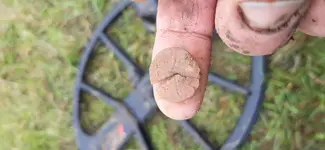Even though you appear to have some experience on an entry level BH detector, I am presuming you have relatively little overall detecting experience.
Before you get to the "detecting in parks" phase with your new detector I suggest the following structured approach to ultimately best learn what signals to dig with your new Equinox:
If you are new to detecting or even just new to a detector, it makes sense to 1) place some test targets of common objects on the ground (penny (copper and zinc types), nickel, dime quarter, iron nail, bottlecap, pull tab, foil, aluminum can, can slaw, large rusted chunk of iron, copper wire, lead sinker, brass button, screw cap, gold ring, silver ring, large silver coin) to see how your detector ID and audio respond to them individually. An additional but not necessarily essential step is to bury and mark those objects to see how the ground may affect those same tone and visual ID indications. This way you tune your brain to what both junk and "treasure" sound like. Detect your yard to see what you can find, too.
Then, when in the field (or your own yard) try to guess the target then recover it to see how you did. This means that while learning you intentionally should dig targets you think are going to be trash as well as those you think or non-trash as well as every iffy signal provided the place you are digging can accommodate the numerous recoveries. The beach or a farm field anywhere you have permission is ideal because you may be also learning how to recover your targets while leaving little trace of the recovery. So you don't want to be "learning" at a lawn, park or ball field that cannot accommodate a lot of recovery plugs (especially poorly dig/repaired holes).
Regarding how to otherwise approach learning the Equinox check out this post:
http://www.treasurenet.com/forums/equinox/596895-so-you-just-got-equinox-christmas.html
After you learn the basics on tone ID and VDI (I suggest sticking with 5 tones regardless of mode) you can get into learning how some of the tonal nuances and target ID "behaviors" clue you into the nature of a target to help you have a better chance of determining trash from treasure within the VDI target IDs are similar.
For example a steady 13 with a solid tone is probably a nickel whereas a jumpy 13/14 with a more "hollow", "lighter" or distorted tone is likely an aluminum pull tab or can slaw. More symmetric objects like rings, coins, and buttons tend to have smoother, punctuated audio than non-symmetriic, jagged, or broken targets. You will also learn how junk targets especially aluminum cans and large flat iron or bent nails can fool you with high TID false tones and how to identify or mitigate digging those targets through proper use of advanced settings such as Iron Bias and use of the built-in pinpoint feature to "trace" target footprints to ID those large, probable junk targets that are giving you good high tones and IDs.
Ultimately learning the audio nuances of the detector is key, especially at 50 tones if your brain can sort it because the audio contains way more information that your brain can integrate to make a target dig decision than just the one or two target ID digits on your screen.
HTH
Good luck!




 . I have not heard about raising the coil, so thank you for that tip. One of the bigger challenges right now is learning pinpointing on the detector. I have used the pinpoint function and used the method where you scan until the target sound is gone and dig at the tip of the coil. More practice definitely need there, but getting marginally better.
. I have not heard about raising the coil, so thank you for that tip. One of the bigger challenges right now is learning pinpointing on the detector. I have used the pinpoint function and used the method where you scan until the target sound is gone and dig at the tip of the coil. More practice definitely need there, but getting marginally better.